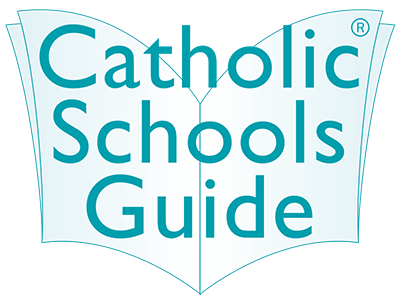News and Media

Digital Tools Help by Adam McArthur
Now is an exciting time for digital technology in education. We are seeing a fundamental shift in how teachers and students engage with education tools, driven by the benefits digital resources can offer and the increasing use of digital devices.
Teachers are increasingly looking for effective digital tools to support them in the classroom and parents are increasingly demanding the use of the right tools to prepare their children for a digital future.This transition from printed materials to digital resources in schools follows a similar ‘digital disruption’ we have seen in other sectors. Computers are becoming an integral component in a rapidly growing number of Australian classrooms. More teachers are using blended learning, a mix of digital and face-to-face teaching, and teachers now use a broad variety of digital tools, including subject-based platforms and apps, internet and social media.
It is widely accepted that ICT has an important role to play in improving education in classrooms and that students’ readiness for the ‘digital age’ is vital. According to the Digital Education Advisory Group (DEAG) report, Beyond the Classroom: A New Digital Education for Young Australians in the 21st Century, “achieving enhanced education outcomes in Australian schools is increasingly linked to the pace of digital education uptake” (1).
Digital Tools in the Classroom
Comparative international studies into the use of ICT in school classrooms consistently find that students in Australia are above average in ICT competency and Australia is one of the highest users of technology in school classrooms (2,3).
What they also find is that the positive impacts of ICT in classrooms correlates to how these resources are used, and is highly dependent on the ICT skills, and the methods and teaching practices (pedagogical approaches) of teachers. This emphasises the importance of digital resources for schools being user-friendly, so making the transition to using them is as easy for teachers as possible.
Our research shows that teachers who use the online education software, LiteracyPlanet and other similar resources find a range of benefits (4):
- Students are easily engaged and often not even aware they are learning.
- They allow for differentiation and personalisation to cater for children across a broad range of abilities, including those who need accelerated learning and those with learning difficulties.
- They minimise administration time and allow for student-led learning, giving teachers more opportunity to give individual attention to students who need it most.
- They facilitate collaboration between students and encourage healthy competition.
- They provide teachers with easy and efficient data collection to track results and monitor student progress.
- They empower students with more independence and control.
- They allow students to work at their own pace and be challenged without being overwhelmed.
- They provide gamified digital learning environments which are particularly helpful in engaging otherwise difficult, struggling or reluctant learners.
Digital Tools at Home
We also know that parental engagement is a key driver of successful learning outcomes for children and this is a growing trend in Australia. Digital resources can seamlessly span across school and home environments, and they provide instant and reliable feedback, making them a great tool for increased parental engagement. Our research shows that:
- Most parents want to be more involved and support their child’s learning at home.
- Most parents of school-aged children in Australia believe online education tools are important.
- A large percentage of children in Australia now use digital technology for learning at home on a regular basis.
- Many parents feel that in addition to helping develop core skills in literacy and numeracy, digital tools help their children’s learning by improving motivation, enthusiasm, confidence, self-esteem and social skills.
Key Trends in eLearning
These benefits and requirements are fuelling a number of key trends in the use of digital resources in schools, both here and overseas:
- Gamification, the application of game dynamics, such as interactivity, rewards and incentives, to learning platforms to motivate and engage students.
- Student-led and personalised learning, which allows learners to pull information and create their own learning path.
- The use of mobile and ‘bring your own’ devices (BYOD) in schools.
- Adaptive digital environments that can identify student needs for support and allow teachers to address these discretely.
- Technology-based monitoring of student progress.
- Automation and curation to deliver tailored content.
- The introduction and use of social media tools, like blogs, and skills, like coding.
Fostering 21st Century Skills
DEAG’s report highlights that the challenge – for teachers and parents – is to embrace and respond to, “not just the innovations in technology, but the extraordinary pace of change…We need to harness the transformative potential of digital technology to support new approaches to innovative learning centred around the development of 21st Century Learning skills”.
Those skills being creativity and innovation; critical thinking, problem solving; decision making; life-long learning; collaboration and communication; ICT literacy; consciousness of being local and global citizens; and personal and social responsibility.
In talking to educators, parents, and children, I hear stories daily of how digital resources such as ours are fostering these important skills. Ultimately – and this is a key founding premise of LiteracyPlanet – digital environments can be interactive and exciting for students, and children learn better when they are engaged and having fun.
Further reading:
1) Beyond the Classroom: A New Digital Education for Young Australians in the 21st Century by Digital Education Advisory Group is available from Australian Policy Online: www.apo.org.au
2) International Association for the Evaluation of Educational Achievement (IEA) Second Information Technology in Education Studies module (SITES 2006) and International Computer and Information Literacy Study (ICILS 2013). Technical reports available online at www.iea.nl.
3) Organisation for Economic Co-operation and Development (OECD) September 2015 report: Students, Computers and Learning: Making the Connection. Available online at: www.oecd.org.
4) To request a copy of the LiteracyPlanet report, eLearning in the Australian Classroom, email: info@literacyplanet.com.au

Adam McArthur is the CEO and Managing Director of LiteracyPlanet.
Over the past decade Adam has been CEO of a number of growth businesses, and now leads a passionate team at LiteracyPlanet, one of Australia’s fastest growing online education companies.
LiteracyPlanet is a leading Australian-developed online resource for the development of English literacy skills in children 4-15 years (P/K-9+). The company aims to deliver quality curriculum-aligned literacy education content in a fun and engaging way. It is currently used by more than 100,000 children in 520 schools nationally, including many Catholic schools, and by children in countries around the world.
The company regularly surveys teachers and parents in Australia on their adoption and use of digital technology for children, and works closely with teachers and Macquarie University to deliver a flexible and user-friendly online tool that provides the scientifically proven requirements for effective learning.
For further information parents and teachers can visit: www.literacyplanet.com.au

